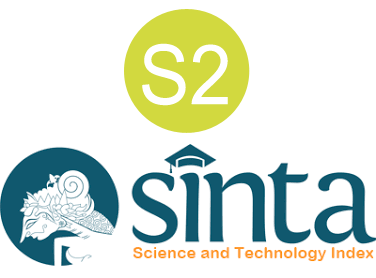Studi Pengembangan Paket Perjalanan Wisata Yoga Bali Kuno di Universitas Hindu Negeri I Gusti Bagus Sugriwa Denpasar
DOI:
https://doi.org/10.37329/jpah.v9i3.3690Keywords:
Yoga Tourism, Ancient Balinese Yoga, Watukaru Tradition, Spiritual Tourism DestinationAbstract
This study aims to develop a travel package centered on Ancient Balinese Yoga, based at the Hindu State University of I Gusti Bagus Sugriwa Denpasar. The tourism package is designed to highlight Bali's spiritual heritage through yoga practices rooted in Hindu Dharma teachings and the local philosophy of the Watukaru tradition. The research employs an Ethnographic Content Analysis (ECA) approach to qualitative data obtained through in-depth interviews, observation of yoga practices, focus group discussions, and literature review. The findings reveal that Ancient Balinese Yoga possesses distinctive characteristics compared to other forms of yoga, particularly in its integration of movement (yogācāra), pranayama, mantra, and Balinese spiritual teachings. The development potential is reflected in four key aspects: uniqueness and authenticity, aesthetic value, spiritual value and character formation, as well as holistic health benefits. This study concludes that Ancient Balinese Yoga holds significant potential as an international spiritual tourism destination, contributing meaningfully to cultural preservation, the strengthening of Bali’s spiritual identity, and the advancement of educational and sustainable tourism.
References
Adnyani, N. M. (2023). Yoga Chandra Tradisi Watukaru. Veda Jyotih: Jurnal Agama dan Sains, 2(1), 31-39.
Cresswell, J. W., & Poth, C. N. (2018). Qualitative Inquiry and Research Design: Choosing Among Five Approaches (4th ed.). SAGE Publications.
Das, R. R., Sankar, J., & Kabra, S. K. (2022). Role of Breathing Exercises in Asthma-Yoga and Pranayama. Indian journal of pediatrics, 89(2), 174-180.
Davidson, M., Liu, Y., & Thakur, R. (2022). Cultural Integration in Yoga Practices: Preserving Authenticity in Contemporary Instruction. International Journal of Health and Wellness, 9(3), 143-160.
Grabara, M. (2016). Effects of Hatha Yoga Exercises on Spine Flexibility in Young Adults. Biomedical Human Kinetics, 8(1), 113.
Jones, T., & Ryan, L. (2023). Teaching Authentic Yoga: Balancing Technical Skills and Cultural Heritage In Global Instruction. Journal of Yoga Studies, 5(1), 21-35.
İlter, S. M., & Ovayolu, Ö. (2021). Pranayama and Nursing. Holistic Nursing Practice, 35(1).
Maheshwari, S. (2022). The Story of Yoga: From Ancient India To The Modern West. South Asian History and Culture, 13(2).
Norman, A. (2011). Spiritual Tourism: Travel and Religious Practice in Western Society. London: Bloomsbury Academic.
Nikam, V. M. (2020). A role of ‘Surya Namaskara’for Good Health. Aayushi International Interdisciplinary Research Journal, 7(2), 112-119.
Nguyen, P., & Hart, M. (2023). Expanding Yoga Certifications: Integrating Traditional Values With Modern Wellness Needs. Global Journal of Yoga Practices, 8(2), 75-88.
Patton, M. Q. (2015). Qualitative Research & Evaluation Methods: Integrating Theory and Practice (4th ed.). SAGE Publications.
Ramamoorthi, R., Gahreman, D., Skinner, T., & Moss, S. (2021). Development Of Sham Yoga Poses To Assess The Benefits Of Yoga In Future Randomized Controlled Trial Studies. Life, 11(2), 130.
Richards, G., & Wilson, J. (2007). Tourism, Creativity and Development. London & New York, UK: Routledge (Taylor & Francis Group).
Ritchie, B. W. (2003). Managing Educational Tourism. Clevedon, UK: Channel View Publications.
Sadhasivam, S., Alankar, S., Maturi, R., Williams, A., Vishnubhotla, R. V., Hariri, S., Mudigonda, M., Pawale, D., Dubbireddi, S., Packiasabapathy, S., Castelluccio, P., Ram, C., Renschler, J., Chang, T., & Subramaniam, B. (2021). Isha Yoga Practices and Participation in Samyama Program are Associated with Reduced HbA1C and Systemic Inflammation, Improved Lipid Profile, and Short-Term and Sustained Improvement in Mental Health: A Prospective Observational Study of Meditators. Frontiers in Psychology, 12, 659667.
Sousa, B., Castro, C., Luís, M. E., & Lopes, P. (2021). Religious and spiritual tourism. In A. M. Ramos, R. Trigo, & L. C. Dias (Eds.), Advances in Hospitality, Tourism, and the Services Industry (Chapter 4). IGI Global.
Smith, M., & Puczkó, L. (2009). Health and Wellness Tourism. Oxford, UK: Routledge.
Surpi, N. K. (2021). Teks-Teks Klasik Yoga dan Refleksinya bagi Pengajaran Yoga di Bali. Jurnal Yoga dan Kesehatan, 4(2).
Surpi, N. K., & Nantra, I. K. (2022). Sejarah Yoga: Asal Usul, Perkembangan, Teks dan Keberadaan Yoga Bali Kuno Tradisi Watukaru. Literasi Nusantara.
Telles, S. (2017). Yoga and Physiotherapy: Therapies Which Complement Each Other. Journal of Yoga and Physiotherapy, 1(3).
Throsby, D. (2001). Economics and Culture. Cambridge, UK: Cambridge University Press.
Vaidik, J., Vaidik, S. K., & Sharma, K. (2020). Mantra Yoga: A Tool for a Healthy Mind. Journal of Biomedical and Pharmaceutical Research, 9(1).
Wang, L., Suzuki, K., & Ahmed, R. (2023). Yoga Tourism in Bali: An Analysis of Cultural Heritage in Wellness Travel. Journal of Tourism and Culture, 12(1), 54-72.
World Tourism Organization. (2018). Tourism and Culture Synergies. Madrid, Spain: World Tourism Organization.
Downloads
Published
How to Cite
Issue
Section
License
Copyright (c) 2025 I Ketut Arta Widana , I Gusti Ngurah Sudiana, Ni Kadek Surpi, Ni Putu Widyastuti

This work is licensed under a Creative Commons Attribution-ShareAlike 4.0 International License.
An author who publishes in the Jurnal Penelitian Agama Hindu agrees to the following terms:
- Author retains the copyright and grants the journal the right of first publication of the work simultaneously licensed under the Creative Commons Attribution-ShareAlike 4.0 License that allows others to share the work with an acknowledgement of the work's authorship and initial publication in this journal
- Author is able to enter into separate, additional contractual arrangements for the non-exclusive distribution of the journal's published version of the work (e.g., post it to an institutional repository or publish it in a book) with the acknowledgement of its initial publication in this journal.
- Author is permitted and encouraged to post his/her work online (e.g., in institutional repositories or on their website) prior to and during the submission process, as it can lead to productive exchanges, as well as earlier and greater citation of the published work (See The Effect of Open Access).
Read more about the Creative Commons Attribution-ShareAlike 4.0 Licence here: https://creativecommons.org/licenses/by-sa/4.0/.








